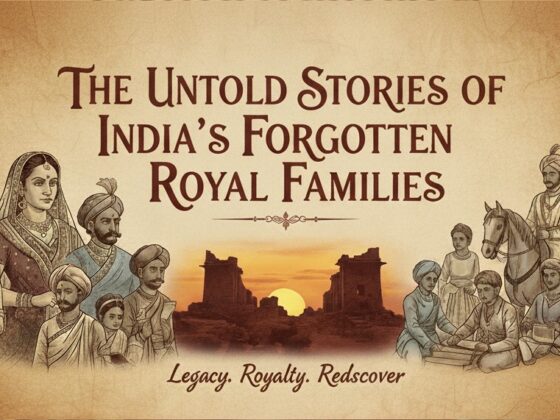The Enduring Influence of Rajput Rulers on Indian Culture

Introduction
The Rajput rulers of India, known for their valor, honor, and noble lineage, shaped the cultural and societal framework of the country. From their contributions to art, architecture, and literature to their influence on governance and social structures, the Rajput dynasty continues to impact India. Primarily from the northern and western parts of India, the Rajputs were not only fierce warriors but also patrons of culture. Their legacy blends indigenous customs with external influences, making them significant figures in India’s history.
The Rajput Era: A Glorious Legacy
The Rajput rulers rose to prominence in the medieval period of India, especially between the 8th and 16th centuries. Their rise coincided with the decline of the Gupta Empire and invasions from Central Asian Turks. Despite constant battles with foreign invaders, the Rajputs remained a dominant force in Indian politics and society. They established kingdoms across Rajasthan, Gujarat, Madhya Pradesh, and other northern regions.
The Rajputs were known for their warrior spirit and princely states. However, their legacy extends beyond military might. Through their patronage of the arts, architecture, and their socio-political systems, the Rajputs had a lasting impact on Indian culture.
Influence on Art and Architecture
One of the most lasting legacies of the Rajput rulers is their contribution to art, especially architecture and painting. The Rajputs were great patrons of architecture, building forts, palaces, and temples that are still symbols of India’s rich heritage.
Rajput architecture is a fusion of Hindu and Mughal styles. It combines intricate carvings, majestic gates, and splendid frescoes. Rajput forts like Amber Fort in Jaipur, Mehrangarh Fort in Jodhpur, and Chittorgarh Fort are examples of architectural excellence. These forts were not just military strongholds; they symbolized Rajput pride and resilience. Palaces such as the City Palace in Udaipur and Hawa Mahal in Jaipur reflect the Rajput’s refined aesthetic sense and love for luxury.
In addition to architecture, Rajput rulers patronized painting. Rajput miniature paintings, known for their vivid colors and intricate details, depict royal court scenes, battles, and Hindu mythology. These paintings provide a glimpse into royal life during the Rajput era.
Literature and Language
The Rajput rulers had a profound impact on literature. They promoted regional languages like Rajputi, Hindi, and Rajasthani. Many Rajput kings were poets and scholars who supported works that glorified their culture, traditions, and valor.
The most famous literary work of the Rajput era is the epic Prithviraj Raso, written by poet Chand Bardai. It narrates the story of Rajput king Prithviraj Chauhan and his legendary battles. These literary works continue to be celebrated for their portrayal of Rajput valor.
The Rajput court was a hub of intellectual and artistic activity. Scholars, poets, and artists gathered here to create and share their works. This tradition helped preserve Rajput culture and influenced the development of literature across India.
Social Structure and Governance
The Rajputs were known for their adherence to strict codes of honor, loyalty, and bravery. Their social structure was rooted in the concept of Rajputana — a confederation of warrior clans, each governed by its own customs and traditions. The Rajputs were fiercely independent and believed in protecting their land and people, which shaped their political philosophy.
Rajput governance combined feudal and monarchical systems. Kings ruled their kingdoms with the help of noble families and warriors who held lands in exchange for military service. The Rajputs valued military prowess, and their rulers often rewarded soldiers and allies with land and titles. This system ensured loyalty and stability within Rajput states.
Socially, the Rajput community was patriarchal, with kings and warriors at the top of the hierarchy. Rajput women played an important role, particularly in preserving honor. The practice of jauhar, or self-immolation, by Rajput women during invasions became a symbol of commitment to honor and dignity.
Religion and Traditions
The Rajputs were ardent followers of Hinduism. Their reigns were marked by the promotion of religious rituals, festivals, and temple constructions. Many Rajput kings sponsored the building of temples dedicated to deities like Vishnu, Shiva, and Durga.
The Rajputs also promoted various religious and cultural festivals. Diwali, Holi, and Teej were grand occasions for Rajput royals, reflecting the opulence of their courts.
Rajput rulers also played a key role in fostering unity among Hindu kingdoms. They frequently formed alliances and marriages with other regional dynasties to protect their kingdoms from foreign invasions.
Conclusion
The Rajput rulers’ influence on Indian culture and society is undeniable. Their architectural achievements, contributions to the arts, and commitment to governance shaped the very fabric of Indian civilization. Their legacy continues to resonate today, reminding us of their significant role in India’s rich history.
As we reflect on their contributions, it is clear that the Rajputs impacted not only the battlefield but also the culture, art, and social structures of India. The Rajput rulers have left a legacy that will continue to inspire generations to come, making them an integral part of India’s glorious past.








